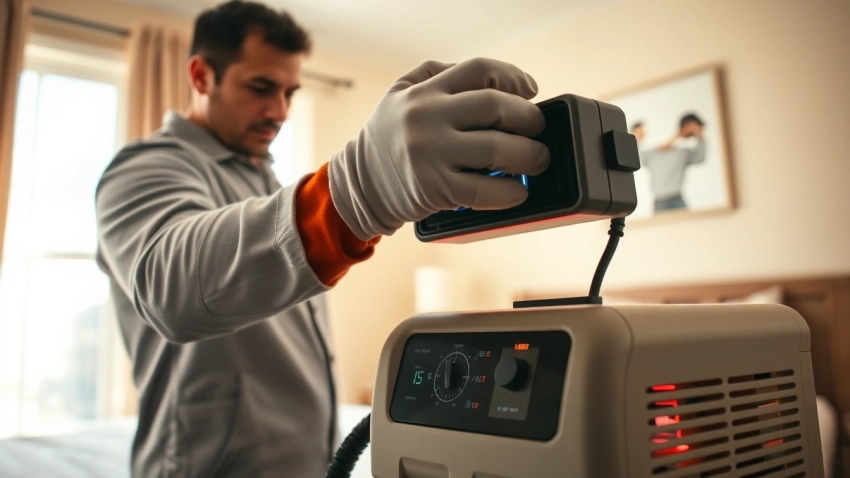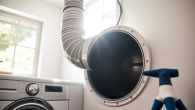
Effective Strategies for Successful Bed bug heat treatment: A Comprehensive Guide
Understanding Bed Bugs and Their Habits
Bed bugs are small, blood-sucking insects that have become a widespread nuisance in homes and establishments alike. Understanding their behavior and habits is crucial in effectively tackling an infestation. One of the most effective treatment methods recognized in the pest control industry is Bed bug heat treatment, which leverages high temperatures to exterminate these uninvited guests.
Life Cycle of Bed Bugs
Bed bugs go through several stages in their life cycle, beginning with the egg stage. A female bed bug can lay up to five eggs per day, resulting in 500 eggs during her lifetime. These eggs hatch into nymphs after about a week, which then go through five molts before becoming adults. Each stage requires a blood meal to progress, often taking about 21 days to reach maturity under suitable conditions. The lifespan of a bed bug can range from several months to over a year, further complicating eradication efforts.
Common Signs of Infestation
Identifying a bed bug infestation is essential for timely treatment. Common signs include:
- Physical Sightings: Adult bed bugs are approximately ¼ inch long and can be in reddish-brown color.
- Blood Stains: Small red or brown stains on bed linens or mattresses often indicate a blood meal.
- Molted Skins: During their growth phases, bed bugs shed their skins, which can be found in common hiding spots.
- Fecal Spots: Tiny black spots may appear where bed bugs congregate, indicating their presence.
Why Heat is an Effective Treatment Method
Heat treatment is a widely accepted method for eliminating bed bugs as it targets all life stages, including the insect’s egg. When temperatures reach 120°F to 135°F (49°C to 57°C) for prolonged periods, bed bugs die within minutes. This method is advantageous because it has the ability to penetrate hiding places where chemical treatments may not effectively reach. Notably, heat treatments are also chemical-free, making them a preferred choice for eco-conscious homeowners.
The Process of Bed Bug Heat Treatment
Equipment and Preparation
Successfully executing a bed bug heat treatment requires specific equipment, often used by professional exterminators. Key equipment includes:
- Heaters: High-capacity heaters capable of generating temperatures over 135°F are necessary.
- Thermal Sensors: To monitor the temperature and ensure all areas are adequately heated.
- Fans: These assist in circulating the hot air throughout the treated space.
Before treatment, thorough preparation is crucial. Homeowners must remove items from affected areas, including clothing, bedding, and delicate objects, as well as ensure that the space is unobstructed to facilitate heat distribution.
Steps to Execute an Effective Treatment
The bed bug heat treatment process generally follows these steps:
- Preparation: Remove all items from the treatment area. This includes electronics, food, and items sensitive to heat.
- Equipping the Space: Set up heaters in strategic locations to ensure even heat distribution.
- Heating the Space: Gradually raise the temperature to 135°F, ensuring it is maintained for several hours to effectively eliminate all life stages of bed bugs.
- Cooling Down: After the treatment, allow the area to cool before returning items. This also aids in ensuring a safe environment.
- Inspection: Post-treatment inspection is vital to confirm success and identify any remaining areas of concern.
Post-Treatment Best Practices
Once the heat treatment is complete, it’s crucial for homeowners to follow certain best practices to ensure long-term success:
- Regular Monitoring: Inspect the treated area regularly for any signs of remaining bed bugs.
- Preventive Measures: To prevent further infestations, establish routines that include checking secondhand items and using protective coverings on mattresses.
- Professional Follow-Up: Consider scheduling follow-up inspections with professional exterminators for enhanced assurance.
Safety Considerations for Bed Bug Heat Treatment
Protecting Your Home and Belongings
While bed bug heat treatment is effective, it necessitates precautions to ensure safety for home and belongings. Heat can cause damage, so it’s crucial to take preventive measures such as removing sensitive items and ensuring that thermostats are functioning correctly during treatments to avoid overheating.
Health and Safety Protocols
Health and safety protocols must be established during the treatment process. This includes:
- Ventilation: During heating, ensure proper ventilation to avoid heat buildup that could potentially compromise air quality.
- Occupant Safety: Keep people and pets out of the area being treated to prevent heat-related injuries.
- Emergency Preparedness: Have a protocol in place in case of weather hazards or equipment malfunction.
Environmental Impact and Considerations
Heat treatments are generally more environmentally friendly compared to chemical treatments, as they do not involve the use of pesticides. However, considerations such as energy consumption and proper disposal of treated materials should also be taken into account to minimize ecological footprints.
Comparative Effectiveness of Bed Bug Heat Treatment vs. Other Methods
Heat Treatment vs. Pesticides
While pesticides have been traditional bed bug control methods, heat treatment offers distinct advantages. Unlike chemicals that may leave residue and have environmental consequences, heat treatments are direct, chemical-free solutions. Additionally, heat can penetrate materials more effectively than pesticides, making it more comprehensive in exterminating all life stages of bed bugs.
Customer Case Studies and Success Stories
Numerous instances showcase the success of heat treatments. For example, a family that tried multiple chemical treatments over the years ultimately opted for heat treatment, resulting in a complete eradication of bed bugs within a single session. Many customers report immediate relief from infestations and long-term peace of mind after utilizing heat treatment solutions.
Evaluating Cost-Effectiveness
Heat treatments, while initially higher in cost compared to some chemical treatments, often yield savings on comprehensive pest control expenses. By effectively eradicating the infestation on the first visit, heat treatments eliminate the need for repeated chemical applications, inspections, and potential property damage associated with prolonged infestations.
Finding Professional Help for Bed Bug Heat Treatment
Choosing the Right Exterminator
When seeking professional help, it’s essential to choose an exterminator specializing in heat treatment. Look for certified technicians with extensive experience in handling heat treatments specifically for bed bugs. Customer reviews and referrals can also provide insight into the effectiveness of their services.
Questions to Ask Before Treatment
Before commencing treatment, homeowners should ask potential exterminators critical questions such as:
- What’s your experience with heat treatment for bed bugs?
- How do you ensure proper temperature control during treatment?
- What safety measures are implemented during treatment?
Follow-Up Care and Prevention Strategies
After heat treatment, effective follow-up care is essential. Homeowners should remain vigilant in monitoring for any signs of bed bugs and enforce preventive strategies to avoid re-infestation. These strategies include implementing regular cleaning, using protective encasements for mattresses, and maintaining clutter-free environments to minimize hiding spots for bed bugs.












Leave a Reply